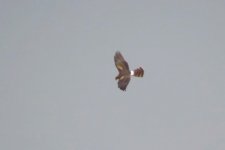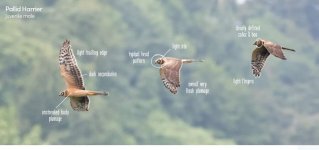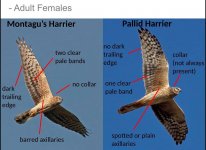Somehow I was suspecting it was a Pallid with the first pic, or at least I couldn’t see how this bird might be identified as a Montagu’s with this single pic, and now with the second pic it surely looks more like a Pallid. Thickset body, largish bill are pro-Pallid for a start, but it’s mainly the head pattern that points to Pallid: the subocular crescent is triangular and divides the cheek patch in two portions that are roughly the same size (crescent usually more rounded in Monty’s, and when it divides the cheek patch, the rear part is usually much larger than the front part), also note the lack of a clear supercilium behind the eye. And an extra point is visible on’pic 1: the short P10.







![IMG-20190928-WA0049[1].jpg](/data/attachments/655/655400-ddf4359958c9465f992313492bf80d34.jpg)



